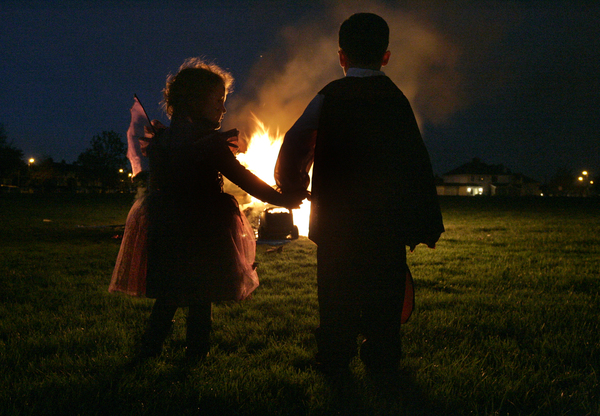This week on Show Me the Science, Professor Luke O’Neill dives into the science and history of Halloween.
The holiday traces it’s roots back to the Celtic festival of Samhain, the ancient Irish celebration marking the start of winter.
Prof O’Neill said that during this “dead time”, the veil between the worlds of the living and dead was thought to be thinner than usual.
“All the Celtic world would celebrate that changing of the year, and they would do it in various ways,” he said.
“A common feature all over Europe where the Celts became dominant, they’d light bonfires.
“That was to mark the occasion, first of all, secondly as a protector.”
 31/10/2011 Halloween bonfires. Photo Mark Stedman/Photocall Ireland
31/10/2011 Halloween bonfires. Photo Mark Stedman/Photocall IrelandProf O’Neill explained that the Celts saw the death of plant life in winter as a sign that the worlds of the living and the dead were interacting.
“It wasn’t necessarily seen as ghosts frightening people, it was more to do with connecting with our dead ancestors,” he said.
“Many cultures connected with the dead in various ways like that.
“Again, remember, it was obviously the boundary between living things and dead things because the winter was coming on.
“That was the time to mark this occasion with the wearing of masks and costumes.”
Rituals
According to Prof O’Neill, it is also believed that the purpose of these “scary” rituals was to help people desensitise themselves to fear.
“Of course, in Hollywood horror movies, you get a big spike of adrenaline there and then you get endorphins afterwards,” he said.
“They’ve measured this in people in the saliva – the endorphins make you feel fine afterwards.
“Of course, if it’s a real risk, that’s a different story.
“In these situations, we know somebody with a mask isn’t going to really harm you – at least we hope not.
“But we still get a fright and then we recover from the fright and then we build resilience.”
Main image: Luke O'Neill (L), trick-or-treaters (R).









